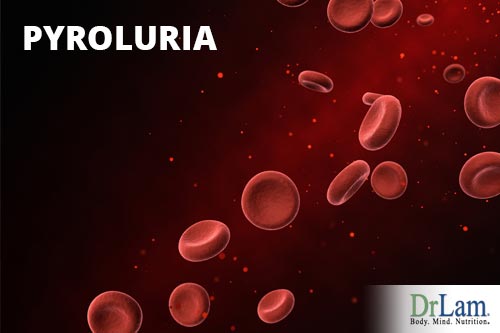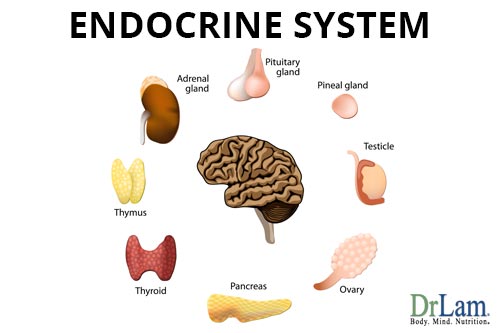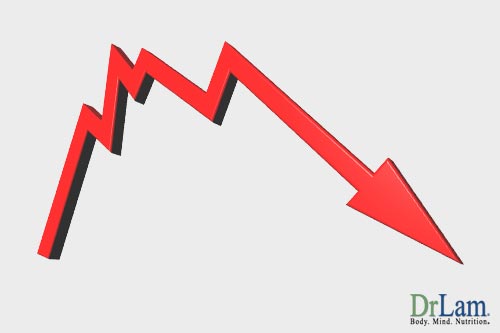
 Pyroluria is a genetically inherited but correctable biochemical imbalance involving an abnormality in hemoglobin synthesis. It can be purely genetic or acquired through environmental and emotional stress and especially from leaky gut syndrome and the overuse of antibiotics. Charles Darwin is thought to be afflicted by this condition.
Pyroluria is a genetically inherited but correctable biochemical imbalance involving an abnormality in hemoglobin synthesis. It can be purely genetic or acquired through environmental and emotional stress and especially from leaky gut syndrome and the overuse of antibiotics. Charles Darwin is thought to be afflicted by this condition.
Pyroluria is known by many different names including Pyrrole Disorder, Kryptopyrrole, Kryptopyrroluria, Pyrroluria, Pyrolle Disorder, Mauve Factor and Hemepyrrole.
Pyroluria is a blood disorder first and foremost. Hemoglobin is a particular protein whose job it is to keep and maintain iron in red blood cells. Because of an abnormality in the synthesis of hemoglobin, a by-product is created called kryptopyrrole, known scientifically as hydroxyhemoppyrrolin-2-one (HPL). This is the chemical that is involved in the production of heme, the substance that causes blood to be red in color. In most humans, HPL causes no problems and is simply excreted from the body via the urine.
With pyroluria, the level of pyrroles/HPL in the blood is abnormally high, and as a result, the receptor sites for Vitamin B6 and zinc are bound up and blocked. Kryptopyrroles target aldehydes in order to bind to them, and specifically targets pyridoxine (Vitamin B6). Together they attach to zinc, which creates a complex that is ultimately eliminated through the urine. If there is excessive binding and excretion out of the body, Vitamin B6 and zinc may be deficient.
Zinc and B6 are essential for the production of neurotransmitters such as serotonin (our happy hormone), melatonin (our sleep hormone), GABA (our calming hormone), and acetylcholine (our housekeeping hormone). They are also involved in the production of our steroid hormones such as cortisol (our anti-stress hormone) and the conversion of oils in the body (fat metabolism, liver, gall bladder issues, and weight control).
The condition usually presents itself in the late teens and persists throughout the balance of the person’s life. Any stressful experience can trigger the condition to be symptomatic because stress increases the production of pyrroles. They include:
 Pyroluria, elevated pyrroles, or a high kryptopyrrole in laboratory test results are frequently associated and identified in behavior disorders, autism, ADHD, Asperger’s, anxiety, ADD, depression, bipolar disorders, aggressive behavior, schizophrenia and other mental and emotional conditions.
Pyroluria, elevated pyrroles, or a high kryptopyrrole in laboratory test results are frequently associated and identified in behavior disorders, autism, ADHD, Asperger’s, anxiety, ADD, depression, bipolar disorders, aggressive behavior, schizophrenia and other mental and emotional conditions.
It can also create poor tolerance of physical and emotional stress, poor anger control, emotional mood swings, anxiety, frequent infection, inability to tan, poor dream recall, poor short-term memory, abnormal fat distribution, sensitivity to light and sound, as well as tactile sensitivities.
About 10 percent of the population at large has the disorder. Only a small percentage of those afflicted has clinical symptoms. There is as many as 20 percent of those under psychiatric care suffering from pyroluria. It is estimated that 40 percent of patients diagnosed with schizophrenia have the condition. It affects women more than men.
Physical characteristics associated with Pyroluria:
Pyrroles are classed as nerve poisons and as such can cause damage to nerves, nerve cells and tissue, and the brain, affecting the transmission of information by nerves. Symptoms of pyroluria, therefore, spread across a broad spectrum. Because they are rather subtle, most are easily missed unless one is on the lookout. They include acne, allergies to food and the environment, anemia, anxiety and nervousness, delayed onset of puberty, delusions and hallucinations, unexplained chills and fever, poor sense of smell or taste, depression, digestive disturbances (constipation, abnormal tenderness), outbursts of temper, fatigue, glucose intolerance/hypoglycemia, gluten intolerance, and hyperactivity. The list continues with insomnia, irregular menstruation in females, increases in sensitivity or intolerance to light, sunlight and sound, crowded front teeth, irritable bowel syndrome, joint pain in knees and legs, loss of appetite, brain fog, low tolerance to stress, memory loss, poor dream recall, restless leg syndrome, sensitivity to medications, social withdrawal, and many more.
Do not be overwhelmed. No single person has all the signs and symptoms. The key to recognizing pyroluria is to detect a pattern of nonspecific symptoms pointing to an underlying general discontent of the body accompanied by a relevant history.
Though having been around since the beginning of civilization, Adrenal Fatigue Syndrome (AFS), pyroluria, mitochondrial disease, and methylenetetrahydrofolate reductase (MTHFR) are some conditions coming to the forefront of scientific investigations because laboratory tools are now available to validate its scientific merit.
A qualified medical practitioner, after reviewing the complete medical and psychiatric history, will start the workup with a urine test for excess kryptopyrroles. Most have less than 10 mcg/dL of KPU. Persons with 10-20 mcg/dl are considered to have borderline pyroluria and may still benefit from treatment. Persons with levels above 20 mcg/dl are considered to have pyroluria. Some have levels in the hundreds.
 If a person has been taking B6 and zinc, then the urine test can show a negative reading or a lower reading than if they were not taking the supplements. This is because the pyrroles will be bound and in a non-detectable form.
If a person has been taking B6 and zinc, then the urine test can show a negative reading or a lower reading than if they were not taking the supplements. This is because the pyrroles will be bound and in a non-detectable form.
In order to treat the pyroluria nutritionally, further tests may be needed, including zinc and copper.
Bear in mind that blood measurements of B6 or zinc is not an accurate way of making this diagnosis as that is highly variable on vitamin intake or diet. Just having a deficiency in these nutrients doesn’t in itself cause an increase in pyrroles. It is rather a faulty enzyme pathway in the liver that causes them to increase.
The differential diagnosis should include Adrenal Fatigue Syndrome, histapenia (low histamine), histadelia (high histamine), and hypercupremia (high copper). There is also a rare genetic condition called acute intermittent porphyria (AIP), which is very severe and quite similar that is often linked with pyroluria. The fact is that of AIP patients tested, 100 percent of them showed positive results for having pyroluria.
Clinical presentation of pyroluria ranges from mild to severe. It depends on the genotype and the level of toxins exposed to in their environment and stress level. Concurrent presence of genetic defects like histapenia, histadelia and hypercupremia mentioned above further complicates the clinical presentation. As a result, symptoms do vary greatly among individuals across a wide spectrum.
Remember that just because one has clinical signs of pyroluria as well as positive laboratory tests does not mean that treatment is necessary. The vast majority of people with pyroluria are in fact asymptomatic and live normal lives.
Because the treatment is metabolic rather than pharmacologic, treatment needs to be titrated to individual requirements. The first thing to do nutritionally is to take more supplements of zinc and Vitamin B6 than is stated as the daily average requirement. This will compensate for the deficits resulting from this condition. These are essential nutrients, which will reduce the amount of HPL excreted, therefore improving all neurobehavioral symptoms linked with having these deficits.
The recommended forms for these nutritional supplements are specifically zinc picolinate and pyridoxal-5-phosphate (P5P).
Vitamin B6 is naturally found in our food in three different forms: pyridoxamine, pyridoxine, and pyridoxal. The last one, pyridoxal is the one that joins with a phosphate forming the metabolically active coenzyme, which is used in our bodies. This is called P5P. The most commonly used supplement of Vitamin B6 is pyridoxine hydrochloride and most people find this very useful. But with this supplement the body still needs to convert the pyridoxine in the small intestine into P5P so that it can be utilized.
The body cannot directly use pyridoxine. The metabolic processes that must take place first are called phosphorylation and oxidation. For these processes to take place, they need riboflavin (Vitamin B2), zinc and magnesium. They should be considered.
 The higher the pyrrole level, the higher the need for B6 and zinc to bind and clear it safely from the body as well as replete the deficiency state that can cause many symptoms.
The higher the pyrrole level, the higher the need for B6 and zinc to bind and clear it safely from the body as well as replete the deficiency state that can cause many symptoms.
All nutritional supplements should be titrated professionally to each person’s body weight, age, lab results, symptom severity and their ability to absorb the supplements. Other considerations would be if the patient were suffering from any underlying digestive disorders affecting their ability to absorb nutrients. Disorders such as: Coeliac disease, Crohn’s disease, food allergies or intolerances, gastritis, GI Tract infections such as clostridia, H. pylori, parasites, or yeast, inflammatory bowel disease, intestinal dysbiosis, which is an imbalance of the flora in the bowel, irritable bowel syndrome, leaky gut syndrome, and/or peptic ulcer.
 If there is a pre-existing deficiency of zinc and Vitamin B6 then secondary deficiencies should be addressed, since these nutrients are vital for the production of certain other nutrients, hormones, neurotransmitters and over one hundred different enzymatic reactions in the body.
If there is a pre-existing deficiency of zinc and Vitamin B6 then secondary deficiencies should be addressed, since these nutrients are vital for the production of certain other nutrients, hormones, neurotransmitters and over one hundred different enzymatic reactions in the body.
Those with a history of liver pathology or congestion need to be especially careful using the right dosage of Vitamin B6 and zinc due to possible faulty liver cytochrome P450 metabolic detoxification pathways within that leads to a higher internal pyrrole load.
Normal healthy people without food allergies, methylation issues, underlying chronic illness, internal chemical imbalances, or digestive disorders can see improvement within a short time, sometimes within days, by only supplementing with the right dose of Vitamin B6 and zinc. The result can be quite dramatic. In fact, experienced clinicians will often proceed with a clinical trial of B6 and zinc if there is suspected polyuria and the right clinical conditions are met. There is often no need for laboratory testing prior to the clinical trial.
Healthy people with severe pyroluria usually require several weeks before progress is seen and improvement may be gradual over three to twelve months. Features of pyroluria usually recur within two to four weeks if the nutritional program is stopped. Thus, the need for treatment is indefinite.
People who are constitutionally weak or have underlying chronic illness fare differently. They usually do not respond with the normal expected outcome and may in fact get worse. Those that have underlying Adrenal Fatigue Syndrome can find this often challenging.
 Adrenal Fatigue Syndrome (AFS) is a stress induced neuro-endocrine dysfunction of the body. The hallmark symptom is fatigue of unknown origin despite normal medical investigation. There are four clinical stages of clinical progression, from mild to severe. In advanced stages, one can be incapacitated and housebound, unable to work or lead a normal social life. In some of these stages, the effects include symptoms similar to pyroluria.
Adrenal Fatigue Syndrome (AFS) is a stress induced neuro-endocrine dysfunction of the body. The hallmark symptom is fatigue of unknown origin despite normal medical investigation. There are four clinical stages of clinical progression, from mild to severe. In advanced stages, one can be incapacitated and housebound, unable to work or lead a normal social life. In some of these stages, the effects include symptoms similar to pyroluria.
Most people with AFS carry on a normal life and are thus unaware of the potential natural progression of this condition until quite late. Allopathic physicians are ignorant of this condition and thus reject its notion. Do not be surprised if your doctor tells you AFS does not exist.
Many symptoms of pyroluria and AFS are similar because both have close ties to the psycho-neuro-endocrine system. The key symptoms include fatigue, insomnia, irritable bowl, anxiety and nervousness, depression, increase in sensitivity or intolerance to temperature change or external stimuli, anxiety, depression, brain fog, low tolerance to stress, and sensitivity to medications and supplements.
Once pyroluria is suspected or confirmed by laboratory testing, most are started on Vitamin B6 and zinc therapy by their physician with high hopes. From our experience, it is rare that B6 and zinc therapy alone lead to an immediate, sustained, and complete recovery of all symptoms of pyroluria when AFS is present or when the body is very weak from other chronic conditions. Obviously, something is amiss.
With concurrent AFS, the body clinically responds to vitamin B6 and zinc therapy with heightened sensitivity similar to how it reacts when the external substrate approaches its internal maximum tolerance level (MTL). Substrates can be medications, nutritional supplements, and selected types of food. The body has a pre-established MTL for each compound. Once reached, the body will try to get rid of the excess automatically. For example, in the case of magnesium or Vitamin C, loose bowel can ensue as the body tries to get rid of it. Different substrates are cleared through different mechanisms. The liver is largely responsible for this job. If not cleared or at least cleared in a timely fashion, say in the case of liver congestion or extracellular matrix pollution, metabolic byproducts can accumulate in the body and become toxic. Circulation of such toxic compounds to the various parts of the body can lead to brain fog, joint pain, irritability, anxiety, insomnia, and cramps.
The body’s overall sensitivity to substrates increases as it gets closer to the MTL. There may be subtle signs of intolerance such as bloating, loose stools, feeling jittery, and insomnia. These are warning signs. If exceeded, the MTL then activates the body’s alert system and initiates steps to rid itself of the excess aggressively. In this alert process, the autonomic nervous system is usually involved, triggering the release of norepinephrine and adrenaline (epinephrine). These powerful hormones lower the threshold for paradoxical reaction and tolerance to stress, medications and supplements.
Forcing more Vitamin B6 and zinc without consideration to the MTL will only worsen the situation as they will wire the body internally and trigger worsening fatigue, anxiety, insomnia, and other undesirable symptoms.
 Compounds that can potentiate the stimulatory effect of B6 and zinc include selenium, copper, manganese, calcium, kelp, iodine, high dose amino acid, and other members of the Vitamin B family. Also included in this effect are adrenal and thyroid glandular, adaptogenic herbs such as ashwagandha, licorice, and rhodiola, which can compound the problem. Those on thyroid hormone replacement therapy, testosterone, DHEA, pregnenolone and bioidentical hormonal therapy need to be extremely careful as well. The addition of Vitamin B6 and zinc to the regiment may hasten sensitivity and can lead to overstimulation and ultimately therapeutic failure.
Compounds that can potentiate the stimulatory effect of B6 and zinc include selenium, copper, manganese, calcium, kelp, iodine, high dose amino acid, and other members of the Vitamin B family. Also included in this effect are adrenal and thyroid glandular, adaptogenic herbs such as ashwagandha, licorice, and rhodiola, which can compound the problem. Those on thyroid hormone replacement therapy, testosterone, DHEA, pregnenolone and bioidentical hormonal therapy need to be extremely careful as well. The addition of Vitamin B6 and zinc to the regiment may hasten sensitivity and can lead to overstimulation and ultimately therapeutic failure.
Therefore, despite high hopes of successful pyroluria treatment, the vast majority will find their clinical outcome less than ideal and sub-optimal, especially if they are already on a basket of different nutritional supplements mentioned above as stimulatory. The more advanced the AFS, the greater the risk of therapeutic failure.
While those in mild AFS may experience consistent benefit, most in advanced stages will feel only a slight improvement of energy at best after a few weeks or months of therapy, with their energy rise plateauing as fatigue resurges. Energy recovery generally falls below expectations and targets for these. Many in advanced AFS do not improve at all and feel no difference. Some, in fact, feel worse right from the start or soon afterward, especially those who are very weak, incapacitated, or in a catabolic state. The overall clinical picture is often muddy at best over time.
Those who respond positively to B6 and zinc alone usually are young, constitutionally strong, and in early stages of AFS, where fatigue is mild and not incapacitating. Positive results are usually felt within weeks and sustainable over time indefinitely. After a while, dosage can be reduced without sacrificing results.
If you are in advanced stages of AFS or internally weak, be very careful commencing zinc and B6 therapy even if your laboratory test for pyroluria is positive. Forcing zinc and B6 into the body under these circumstances is a common recovery mistake.
Unless there is primary pyroluria and no other associated chronic disease that weakens the body, healing the adrenals first can often lead to spontaneous recovery of most if not all symptoms of pyroluria. Attempts to heal the pyroluria without concurrent attention to AFS can retard the healing process of both.
Relying on laboratory results alone to start treatment may be acceptable for those in early stages of AFS where symptoms are relatively mild and the body is strong. Do not embark on an aggressive treatment program by relying on laboratory results alone if you are in advanced stages of AFS. Vitamin B6 and zinc can be adrenal crash triggers in such cases.
Unless there is a very clear indication of Vitamin B6 and zinc therapy, many factors have to be considered prior to commencing aggressive therapy. Most sufferers of AFS are so eager to try Vitamin B6 and zinc that they overlook considering the potential negative outcome as part of their overall decision making. They are emotionally devastated when clinical results do not meet their expectations as they get worse overall instead of better.
 Using any nutritional supplementation for AFS or pyroluria recovery should proceed slowly and under professional care. Any immediate drastic improvement of fatigue after using B6 and zinc is not necessarily a good sign. It can be a sign of impending substrate saturation as MTL is reached. Hypersensitivity, paradoxical effect, worsening fatigue, intolerance and adrenal crashes can result if advanced AFS is present.
Using any nutritional supplementation for AFS or pyroluria recovery should proceed slowly and under professional care. Any immediate drastic improvement of fatigue after using B6 and zinc is not necessarily a good sign. It can be a sign of impending substrate saturation as MTL is reached. Hypersensitivity, paradoxical effect, worsening fatigue, intolerance and adrenal crashes can result if advanced AFS is present.
A significant immediate positive outcome can also be, but not always, an alert of underlying liver dysfunction, extracellular matrix congestion, feedback loop dysregulation, or hypersensitivity of receptor sites as the body overreacts and amplifies the therapeutic response. Always be on the lookout for any drastic clinical change, whether it is positive or negative. Both can point to underlying dysfunction.
Once diagnosed or suspected of pyroluria, especially when advanced AFS is present, the temptation to start on B6 and zinc immediately should be refrained. Stabilize and strengthen the adrenals first. This will reduce the chances of adrenal crashes triggered by pyroluria therapy.
Our comprehensive total body approach can usually stabilize and bring healing to weak adrenals within weeks, though those with liver and extracellular matrix congestion may need significantly more time. Fatigue should begin to reduce once the healing process starts. If pyroluria is also present, symptoms should also subside automatically as adrenal healing progresses. No Vitamin B6 or zinc is then necessary.
Once the adrenals are stable and well-healed, a trial course of Vitamin B6 and zinc can be considered as a way to speed up the AFS recovery process, with dosage titrated carefully. If pyroluria is indeed a concurrent problem, it will be corrected automatically. B6 and zinc helps both AFS and pyroluria without the risk of adrenal crashes when given at the right time and dosage. Jumping in too early can worsen the overall fatigue.
One has closely monitored any change in clinical symptoms and made dosage and delivery system adjustments accordingly.
Pyroluria (Pyrrole disorder) is characterized by an elevated urine kryptopyrrole, which results in a dramatic deficiency of zinc and Vitamin B6. It is a blood disorder, which is genetically transmitted. Because of an abnormality in the synthesis of hemoglobin, a chemical imbalance occurs in the blood. Diagnosis can be made by urine laboratory testing. Treatment consists of Vitamin B6 and zinc. The decision of whether treatment is needed varies. The majority of sufferers are asymptomatic with no treatment needed. The symptoms of pyroluria and AFS are similar. Our clinical experience has shown that treatment for pyroluria is best deferred until the adrenals are well healed in sufferers that are in advanced stages of AFS. Too aggressive an approach with pyroluria wrongly timed can worsen AFS and trigger adrenal crashes.
There should be no correlation.
No. If you are bleeding heavily due to menstruation, there may be a connection through OAT axis imbalance.
"This is the simplest yet most comprehensive review of CFS, AFS, mitochondrial dysfunction and pyroluria linked together."
"This is the simplest yet most comprehensive review of CFS, AFS, mitochondrial dysfunction and pyroluria linked together. I am experiencing them all and my heart goes out to all those whose lives are so much more severely limited than I am.
This is the only report that enables me to understand why all the natural help my very alternative doctor has suggested for sleep has just left me more wide awake, even though still quite relaxed. I was aware that taking pyrole supplements was doing some rather risky detox of copper but we got that under control. Now i have a bigger picture which I can share with my doctor who is learning as we go along. I wont be consulting Dr Lam from Australia but I feel I am helped and will continue to do my best to manage my supplements."